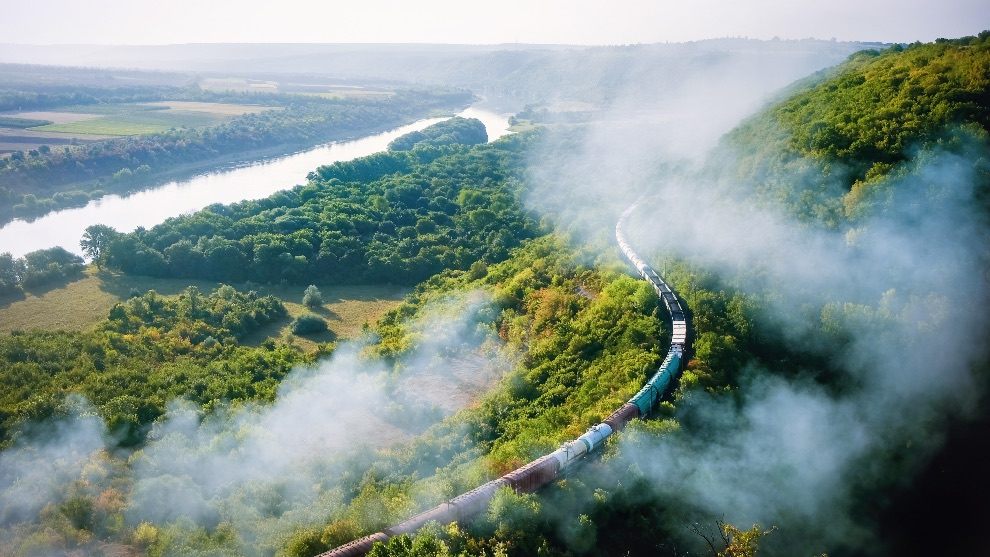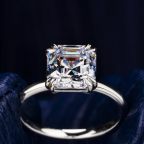
Top 9 Famous Product Designers to Follow In 2024
Ever looked at amazing equipment and structures and wondered how their designers came up with such solutions?
Through creativity and expert artistry, innovative product designers have created answers to big and small problems throughout history. Buckminster Fuller's geodesic domes, which combined economical forms with sustainability before their time, are one of the pioneers whose astounding effects are worth studying in 2024.
Through clever railroad designs, Isambard Kingdom Brunel also combined progress and nature. Antoni Gaudi also created an architecture that combined tradition with nature.
In this article, you will learn about other trailblazers who, like futurist Luigi Colani and simplicity proponent Dieter Rams, question the status quo and spur change. Thus, when you discover how tenacity and fresh ideas may change the world, let their experiences inspire your creativity.
1. Buckminster Fuller
Fuller is a well-known product designer in the endless list of famous product designers.
Buckminster Fuller did many different things during his life, which lasted from the late 1800s to the 1980s. He designed buildings and was a thinker and philosopher. He always wanted to fix problems and help people through his art.
One of his designs is the Dymaxion House, a triangular house that is fairly priced and good at saving energy. Another famous design was the geodesic dome. Triangle panels that work together to make a strong structure from a few elements.
In addition, Buckminster wanted everything, from his domes to everyday things, to last long before the word "dome" became popular. His out-of-the-box ideas are still valuable for designers today.
2. Isabella Kingdom Brunel
Brunel was a British engineer who encountered many problems in Britain in the 1800s. Among other things, he helped build trains that made moving people and goods faster and easier. However, getting the railway lines built meant going over rivers or up and down hills.
Through his tunnels and viaducts, Isambard made it easier for the railroads to fit in with their surroundings. He developed the strong Great Cylinder tool to lift parts over rivers.
When Isambard built his trains, transportation got better without hurting the environment. His new ideas during construction set the bar for how to build in a way that is good for the environment.
3. Victor Papanek
Papanek was one of the first to discuss how designs affect people and the surrounding. His most famous book, "Design for the Real World," discusses the problems with buying mass-produced goods. He encourages designers to consider who will use their items and for what purpose.
He created, for example, recycled household goods that are cheap and easy to make at home. Victor used democratic designs to give people power, and long before recycling, low prices were popular ideas.
His ideas made it possible for products to be made that are good for people and the environment. Thus, any designer who wants to improve the world can look at Victor Papanek's work as an example.
4. Christian von Koenigsegg
Christian von Koenigsegg made fast, high-performance luxury sports cars because he was a perfectionist, even though he had never studied how cars are made. He built cars that were better than supercars, which cost millions of dollars, and competed with big names.
Koenigsegg's cars look like works of art, with beautiful, naturally-inspired shapes and fine craftsmanship.
Christian also lead the way in making good patterns for the environment. The low-emission engines in Koenigsegg cars are made to last more than a thousand years longer than regular engines.
Furthermore, Christian demonstrates how dedication and innovation can go against the establishment and help people and the environment. His story encourages mental freedom and technology that is good for nature.
5. David Lewis
The founder of Bang and Olufsen, David Lewis, believes in slow, deliberate production, which differs from most CEOs who promote fast consumerism. He wants to make well-made products that meet people's needs.
Bang & Olufsen audio equipment with regular software updates lasts decades, so it is not meant to become obsolete. Lewis makes the case for prioritizing current consumers' needs above what is new. With his method, consumers who do not replace things too soon save financial and production waste.
Moreover, David Lewis lays a framework for companies to thoughtfully support communities without putting immediate financial gain ahead of long-term effects.
6. Luigi Colani
The daring, future designs of car designer Luigi Colani challenged norms. His thoughts about flying saucers used to be impossible to make, but they seem very far-fetched now. Through hydrodynamic designs affected by aquatic life, Colani tried to combine cutting-edge technology with organic shapes.
His plans for future cars and trucks showed how technology could work like nature. Some people didn't like his ideas and thought they couldn't work, but now many see him as a genius.
Colani pushed the limits of design to think about how transportation could grow in a way that works for the environment. He encourages designers to think outside the box by proposing that art, science, and nature can change whole sectors.
7. Dieter Rams
While working for Braun, German designer Dieter Rams's motto, "less is better," helped shape how things were made in the middle of the 20th century. His basic patterns were easy to understand and lovely to look at. Rams thought well-designed products should last a long time without being quickly replaced, use few materials, and not be annoying or confusing.
He tested very carefully to get quality over quantity. Thus, Rams's focus on simplicity has shaped a group of designers who want to honestly, usefully, and harmlessly meet needs. Today, design is still pushed forward by durability, clarity, and utility standards.
8. Giorgetto Giugiaro
Like the DeLorean time machine, Giorgetto Giugiaro designed cars that looked from the future and were used in movies. His works mixed ideas from aeronautics with lights and snarling wedges that reminded of future car designs. Giugiaro saw a future with quick, personalized transportation. He devised prototypes like cars that could tell when their driver was about to come and change.
He looked into how new technologies like surfaces that can fix themselves and metal that can be bent might change the way cars are made in the future. Some of Giugiaro's ideas seemed to be from the future.
Still, he wanted to use new ideas to make transportation more possible. He sparked ideas on how technology and product design may come together to create a better future.
9. Antoni Gaudi
Antoni Gaudi built amazing buildings in Barcelona in the early 1900s that mixed local traditions with natural shapes. Instead of straight lines, he used paraboloids and polyhedra to make his structures look like giant fantasy statues.
Gaudi looked at trees, vines, and natural arches to get ideas for buildings like the Sagrada Familia, which is still being built.
He also used multicolored glass, ceramics, and rocks to decorate the outside of buildings so that they could change how they looked in the sun. Today, Gaudi's magical architectural philosophy of learning from nature to service communities wonderfully is still influencing product designers who are looking for bio-inspired solutions.
His experience is a good reminder that noticing the little things can lead to big things.
Conclusion
By inventiveness and tenacity, these well-known product designers transformed the environment in fascinating ways and made the impossible feasible.
Designers will continue to push the limits to find answers and build a sustainable future by remembering the work of pioneers like Antoni Gaudi, Isambard Kingdom Brunel, and Buckminster Fuller.
Their experiences show how passion, bravery, and thinking outside the box can leave a lasting impact with careful planning.

















